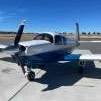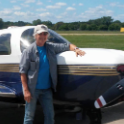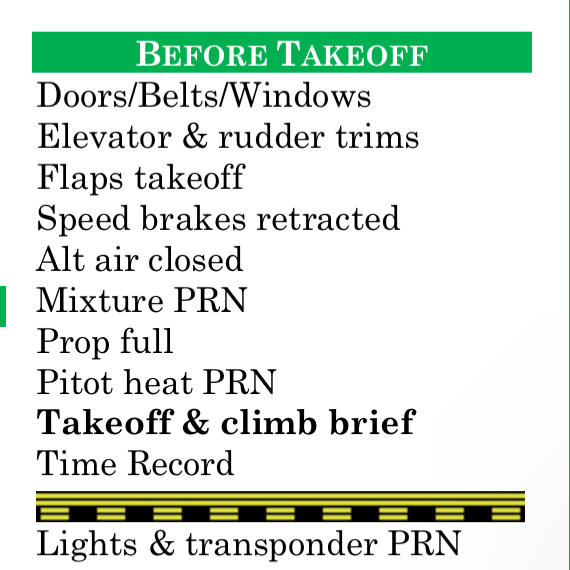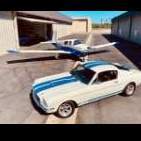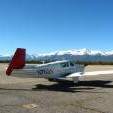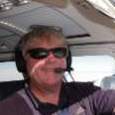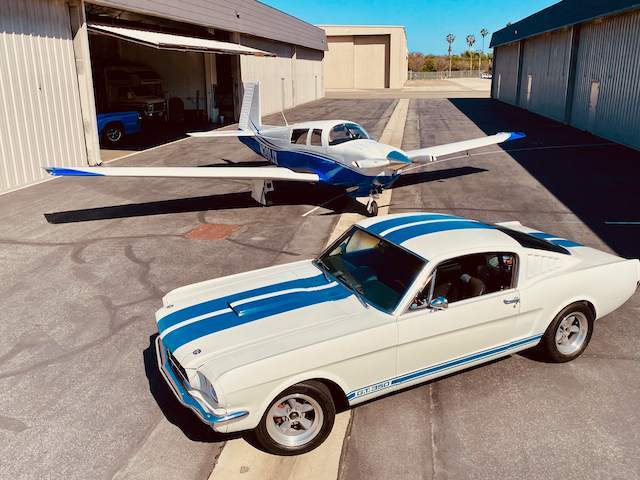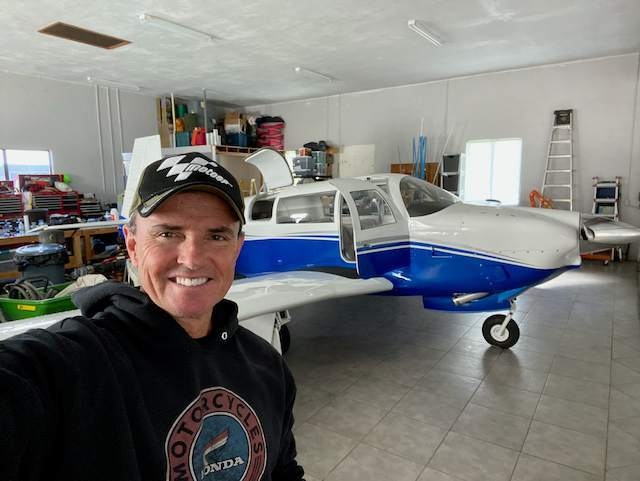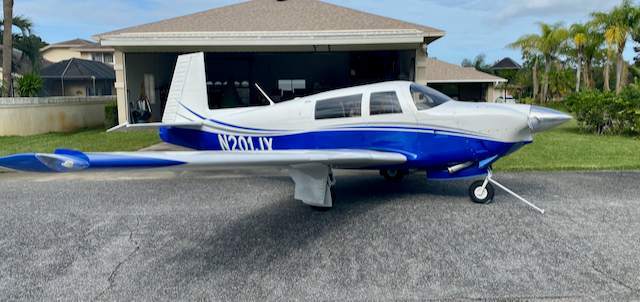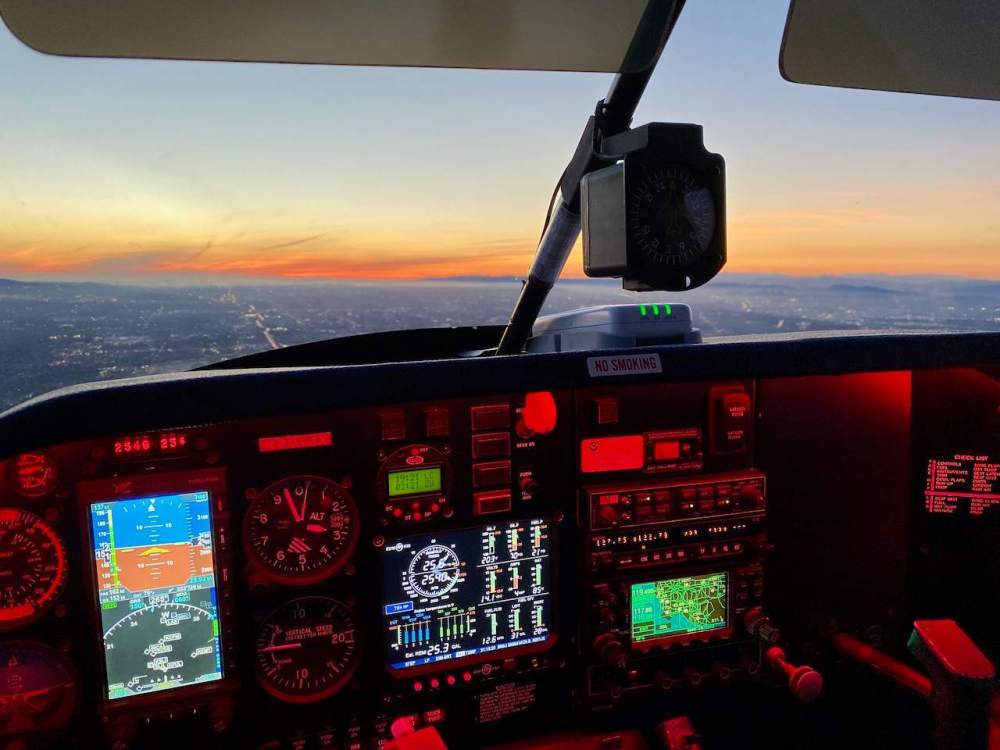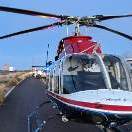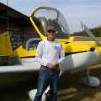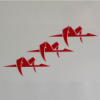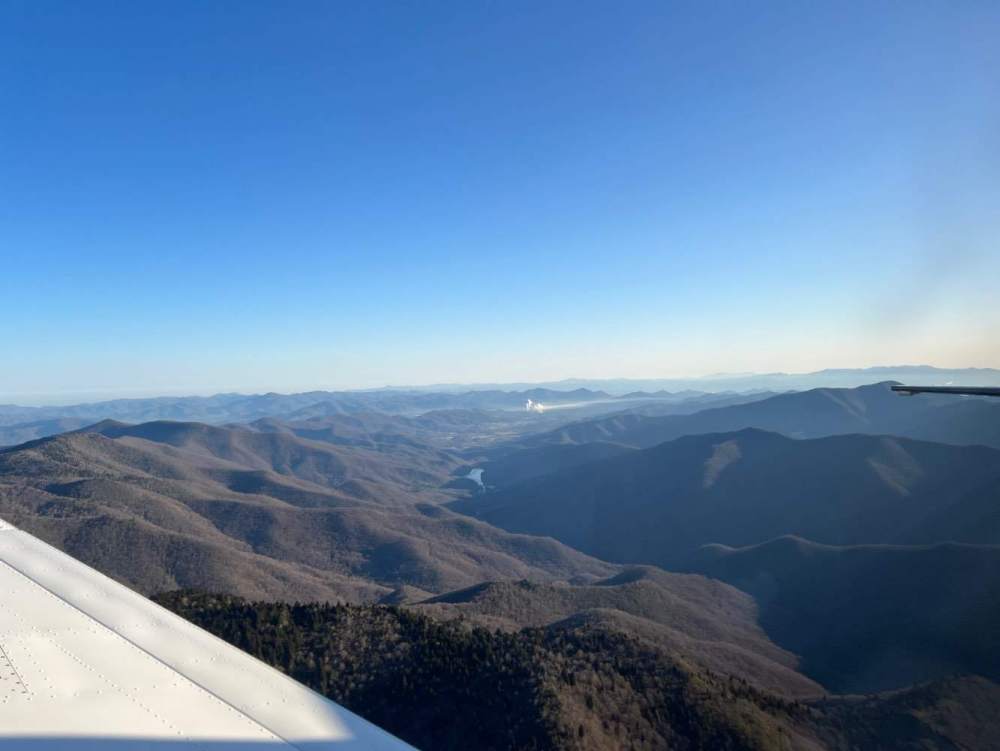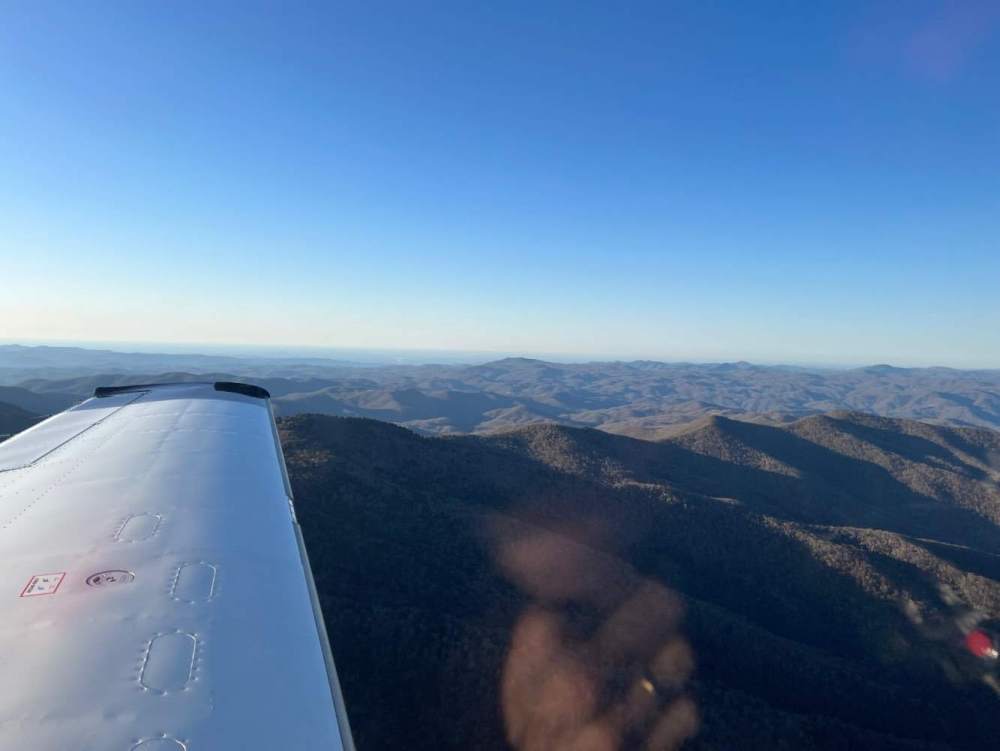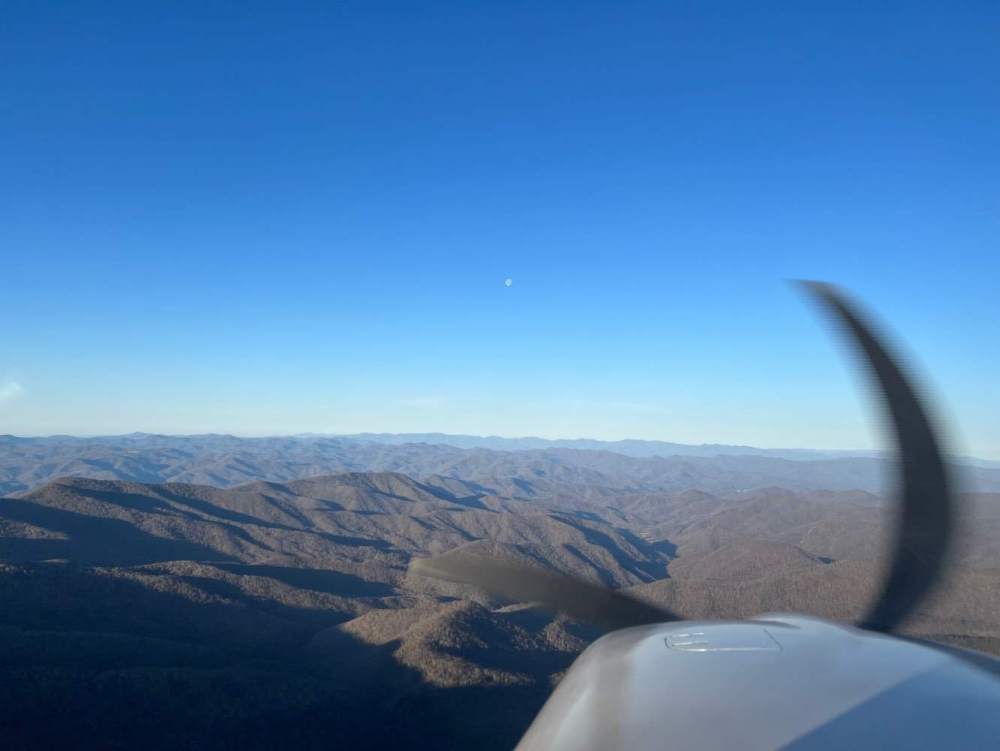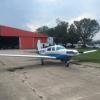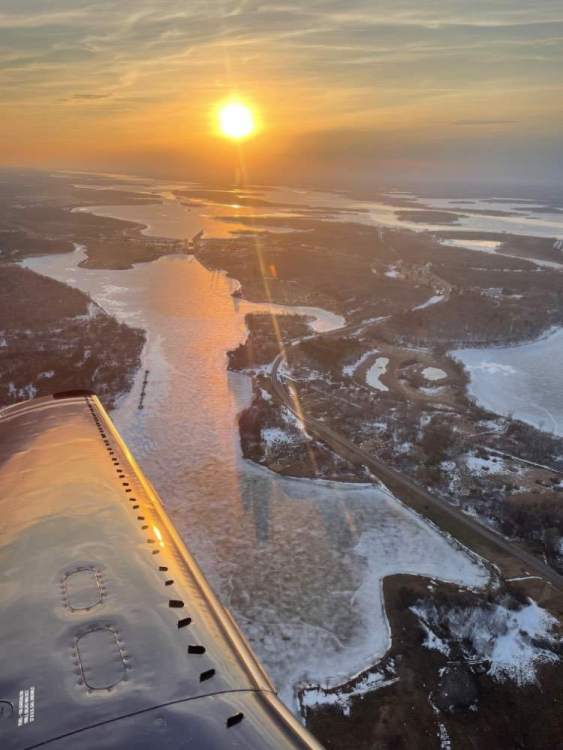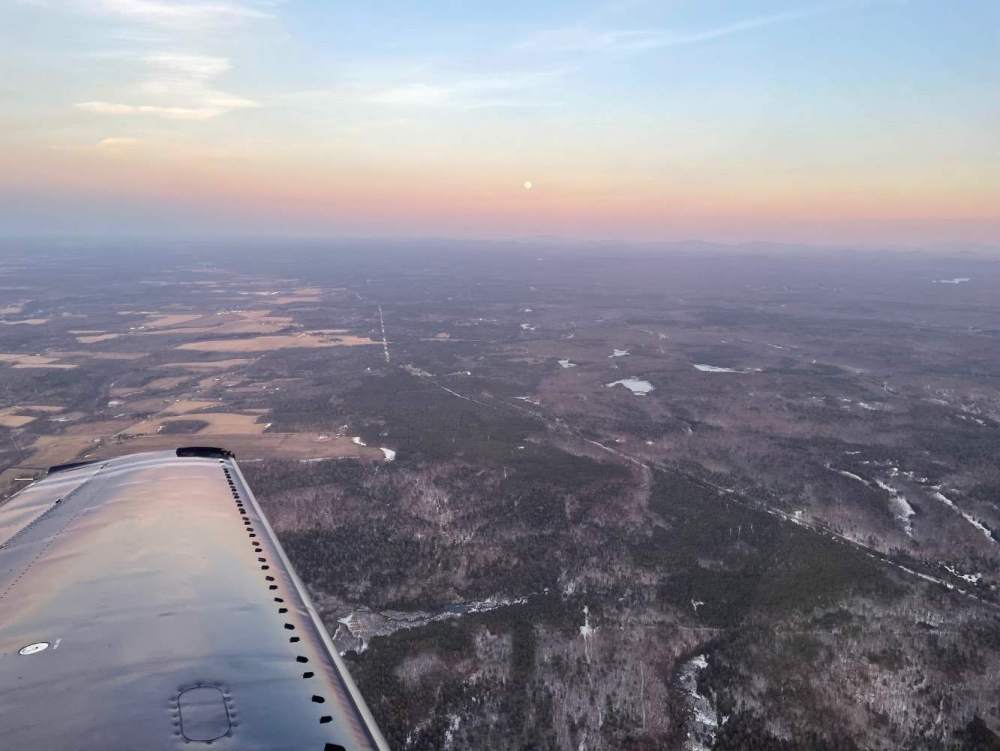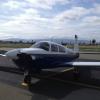Leaderboard
Popular Content
Showing content with the highest reputation on 03/26/2022 in all areas
-
Oh duh, yes. It was $100 to diagnose the issue, which applies toward final cost of repair. In this case, it was the common capacitor leakage that damaged the power supply. $850 total damage which was reasonable compared to some other verbal estimates I had received. I’m more than happy with the level of service I received from Bevan Aviation.4 points
-
Combination of things. From a single pilot human factors standpoint, I didn't see any advantage to challenge-response. In many cases I didn't think it enhanced anything and it allowed me the ability to group items. This is my before takeoff check in an Ovation. Do you see any advantages to breaking up that first line into three challenge - response items or the need for large capital letters to remind me that the doors need to be CLOSED, the belts SECURE, and the windows CLOSED? Or that the elevator and rudder trims need to be SET to something? If you do, then that's what you do in yours. I just find this format far more usable and efficient for me. (And yes, I use the medical "PRN" as shorthand.) I can probably consolidate more with no loss of function.3 points
-
My many thanks to Norm and Gretchen for offering to sell the plane to us. I’ve been dreaming of Mooney ownership for awhile now, so I’m still pinching myself in disbelief when I fly the plane, but loving l every minute of it. Norm made N201JX into one of the nicest 77 J Models out there, and I plan to keep it that way and make it even better. As yet I haven’t flown my wife in 1JX, but I know she is going to be really thrilled. Thanks for the MS welcome.3 points
-
After years of trying different methods, I found a simple solution that works great for me. Right Side of the hour (minute hand on the right)- right tank, left side of the hour-left tank. Previously I questioned whether or not I switched tanks. Now I glance at my watch and quickly confirm.3 points
-
Short video of first crank of my newly rebuilt Bravo engine. The cell has a shroud for cooling that moves into place before the power is run up. She ran all day yesterday! No issues so she will ship on Monday. VID-20220324-WA0005.mp42 points
-
For those interested, my Daily Weather Roundup for SUN 'n FUN starts next week on Wednesday, March 30th. Join me live on the EZWxBrief YouTube channel beginning at 3 pm eastern time. If you are flying you may want to watch each day to gain a better appreciation of the weather challenges that you may face flying to the event. Even if you are not flying to SUN 'n FUN or even attending the event, it may be an educational opportunity to learn how to interpret medium- to long-range forecasts. Each daily broadcast will be 20 to 30 minutes long and that includes a broadcast on Saturday and Sunday at the same time. The last live broadcast will be on Monday, April 4th. They will be recorded and available on the same YouTube channel shortly after the broadcast ends. At the moment, the GFS model is predicting a potent upper-level trough moving out of the southern Rockies on Wednesday morning, but a ridge dominates most of the eastern U.S. during the early part of the week providing for nice weather in that area. This is more than 10 days out, so there's a lot of uncertainty here in this forecast.2 points
-
Yep, all correct and to be specific, its only the Nav database that needs to be upto date to fly RNAV approaches, Other databases like Safe Taxi, obstacles have no legal currency requirement. But of course it would be nuts to rely on out of date databases but you are equipped to get that info off your EFB's. Many good references quoted about the legalities of what you can do with an expired database with regards to enroute and procedures - but just wanted to point out that your Garmin AFMS in your POH trumps the AIM and AC and is also more restrictive than noted. All the database currency talk aside, I would be much more concerned though about the statement "I only plan to fly IFR a couple times a year, just maintain currency." I hope that doesn't mean to imply one can maintain instrument proficiency by flying IFR a only couple times a year! We see lots of fatal accidents involving pilots that weren't instrument current that bet their life thinking they could pull off an IMC approach and lost. Although of course one can maintain currency flying VFR practice approaches with a safety pilot or CFI, but I still don't see how one is going to do that without a current database. Limit currency flight to VOR/ILS? Maintaining GPS Buttonology is a big part of instrument proficiency. Maintaining instrument proficiency to fly IMC approaches requires monthly practice, if not weekly practice.2 points
-
Those data points are appreciated, but I'm not sure what to say about it. It's a common occurrence at my home drome, and not just in my Mooney, but other fuel-injected airplanes. One possibility is all of us have small induction leaks, and I'm not arrogant enough to rule that out entirely. But induction leaks are relatively straightforward to check for in flight (see https://resources.savvyaviation.com/in-flight-diagnostics/), and my airplane doesn't exhibit the differential EGT delta discussed there. The only other thing that comes to mind is that my home drome is 5050' MSL, higher than many of the participants here on the forums. The air is less dense here, and therefore less capable of cooling, but I freely admit that's kind of a thin argument. Might carry more weight if I was in Leadville or similar, but mile high isn't *that* high. All I can say is that I'm pretty confident a bit of popping and griping from a fuel-injected engine whose cylinder feed lines run right over the top of the cylinder, while idling along the taxiway at lower power, even for extended periods of time, doesn't strike me as a "this is unsafe and must be fixed" kind of problem.2 points
-
While I realize this isn't practical for all pilots, the best thing I've ever done to minimize my own checklist errors, is to become a CFI and watch other pilots commit checklist errors. This doesn't make me immune from errors, of course - sometimes exactly the same errors I observe and corrected in others. But it has taught me a couple of things. Fundamentally, there are only two types of checklist error, and they occur whether using paper, tablet, mnemonic, "flow", or whatever. Type 1 is missing an item entirely. Type 2 is non-performance of an item, even though you said and/or thought about it. While everyone can commit Type 1 errors, low-time pilots are more prone, and hence I've seen a lot of them as an instructor. I can say with high confidence that the more detailed the checklist, the more likely a pilot is to commit an error in using it. A lot of low-time pilots - myself included a while back - get this understandable impression that the more detail a checklist has, the less likely one is to miss doing something important. Counterintuitively, the opposite is true. The more details - and therefore physically longer - a checklist is, the more likely the pilot is to miss something on it. The propensity for error is multipled about 10x if the checklist is so long that the pilot has to flip pages, or even just move to a new column on the same page. As an example, I give you the POH for the ubiquitous Cessna 172M. This otherwise fine document contains a set of Normal Procedures checklists that are often copied and laminated for rental pilot usage, and all of the "Starting Engine", "Maximum Performance Takeoff", and "Before Landing" checklists are split across two pages (if you look at later Cessna POHs, the factory corrected this). Some aftermarket checklists have similar splits; and lots of homegrown ones get this way because the well-intentioned author put so much stuff on them that individual sections won't fit in a single page or column. I can't tell you how many times I've seen someone miss the last item on page/column 1 or the first item on page/column 2. Even when the list is one page/column/screen/whatever, however, pilots are highly prone to miss something once the list gets much beyond a half dozen items or so. I've tried teaching folks that they must keep their left thumb on the item they're performing to avoid skips, but this turns out to be impractical. Electronic checklists try to mitigate this by requiring you to click an item to actually "check it off". But it turns out this has problems too - anyone who's used a touchscreen device can tell you how easy it is to inadvertently click something you didn't mean to. My conclusion based on these observations? Simpler is better, almost to a fault. Sure, you should turn on your landing light before takeoff, but the likelihood of that killing you is essentially zero compared to other truly critical pre-takeoff checklist items, like flight controls free and correct. So maybe the landing light gets consolidated into "Lights PRN", or even not mentioned at all. However you achieve it, simplify and consolidate. Fewer items, with a focus on real killers. Group noncritical items together the way midlifeflyer does above, e.g. taking off in an Ovation with an unlatched cabin door or open pilot vent window is not going to kill you unless you panic, so one item for all of them. I maintain several checklists for airplanes I fly, and my rule is that all normal procedures must fit on 4.25" x 11" (half letter size cut lengthwise) card stock, with every pre-takeoff item on the front, and all takeoff/landing items on the back. All emergency procedures must fit on a second 4.25" x 11" card, which I usually print on differently colored stock. I happen to like this half-letter-size format, but that's not the important takeaway. My point is to reduce and simplify - till it "hurts" - and forcing yourself into limited space is an effective way to do that. As for Type 2 errors, this is a lot tougher nut to crack, and I really don't have a good answer. But I'll say that over time, I'm coming to the same conclusion as midlifeflyer that "challenge and respond" may counterintuitively be less safe, because it makes one prone to Type 2 errors. Again, I can't tell you how many times I've watched a pilot confidently say something like, "Carburetor heat OFF!" while staring at and in some cases even touching a carburetor heat control that is obviously set ON. I actually do compose my checklists in a challenge/respond format, but the more refined they get, the less prescriptive they are, with many items saying AS REQUIRED rather than prescribing the "correct" setting. Amongst students, this makes things go slower in the first few lessons, but I really do believe it reduces Type 2 errors in the long run. Think about this for a minute: what if everything on your pre-takeoff challenge/respond checklist had a response of PRN? Flight controls? PRN. Mixture? PRN. Lights? PRN. I think this forces you to actually think about what setting is appropriate, and set/verify it. I don't know of any studies that formally support my thinking, but it's certainly the way I've started to lean over the years. I'm just a hobby instructor, not in the class of a Don Kaye or midlifeflyer, so don't take my advice as gospel. But if you want to know what causes checklist errors, suggest conferring with your favorite CFI on the types of errors they see on an everyday basis - especially amongst their more experienced students - and focus on eliminating those.2 points
-
David, As usual Lynn got it figured out. It was the airspeed safety device that is located right in the back of the ASI. He found loose tubing, fixed that, then adjusted the screw so it goes up right up at 85 mph. Thank you again to everybody on this forum and of course thank you to AGL for again making it easy for me. On a sidenote, flying back from Morganton to Charleston (actually Moncks Corner) was one of the worst turbulence days I’ve flown in for a while. I was VFR so I experimented at 5500, then went down to 3500, then back up to 7500. Never did find smooth air all the way down to the surface at MKS. Anyway, I took the auto pilot off and IT gave me a lot of practice on maintaining a heading and altitude. Bill 76 M20C N7070V2 points
-
I agree that's the goal of checklists, but the human brain has its known pitfalls, and repetition is one of them--if you do things the same way repeatedly, you will continue to do it the same way repeatedly. And while we can try to be vigilant about complacency, it does seem like a recipe for complacency. Clearly checklists and standardization work, while complacency can be mitigated in air carrier civil aviation, with its track record in safety, but I would argue that's hard to compare because of the profound nature of having a second pilot questionable since the safety rate varies across geopolitical and cultural regions To say that the procedures and the safety process in air carrier civil aviation will work for people in general aviation I think is a lot of apples-to-oranges and wishful thinking, but it's hard to do research on GA pilots, because our missions are so diverse.2 points
-
The important thing is to engage the brain with all checklist activities. Realize what you are checking, know that you have checked it by recognizing that you have performed the mental process required (rather than just going through the motions), and recognizing you have checked all the important items for the stage of flight you are entering. John Breda2 points
-
Hi everyone I wanted to let everyone know N201JX has new owners, Gerald and Danita Prendergast of Long Beach, CA. Gerald's MS member name is @gtprend . The GT stands for Gerald T, but it also stands for something else: This is what you call a megawatt smile: Paint by Hawk Aircraft Painting in Zephyhills FL. SW Matterhorn White, Silver Metallic and a new blue color, Sherwin Williams Skyscapes, Pearl Sea Blue. First time they had painted this new color. It is stunning. And Gerald is enjoying the heck out of his new bird, but refueling takes awhile due to visitors. I told him to get used to it!! N201JX has unique LED interior overhead lighting and dual-color LED glareshield lights. A shot from this evening on the way back to Long Beach. Congrats to Gerald and Danita! I could not have picked a better or more deserving successor for N201JX. I will still be around and am planning to speak at the Mooney Summit this fall. Thanks everyone.2 points
-
Thank you all for the good info and insights, while I am a professional pilot, I am a brand new plane owner of like a couple weeks. Just trying to gather as much information as I can very good point, I didn't mean only fly a couple times a year, just fly IFR a couple times a year while flying mostly VFR. I'm a Helicopter air ambulance pilot flying single pilot VFR and we practice IIMC procedures all the time. I was merely saying fly enough to not have to do an IPC all the time. Im also a current helicopter CFII1 point
-
This particular airplane has lived "at altitude" for about 20 years, even the previous owner lived in the Utah high country. I'm not concerned the fuel servo isn't set up properly if that's what you're getting at. In particular, I have no desire for the fuel servo's idle adjustments to be set up more lean than they are, just because the home 'drome is 5050 MSL. I want it to idle well at sea level, and it's simple to lean (aggressively) for taxi at home, which we do.1 point
-
VFR only, with current data and charts in your EFB, your panel GPS is irrelevant. Unless, of course, you end up using it and have a deviation as a result of something being out of date and incorrect. Its just a rehash of the ancient discussion about whether charts are required at all.1 point
-
If this is an indication of an issue, I better get myself checked out asap!1 point
-
I've had 4 guys 6 feet or more in comfortably. Range then is the issue. Nice to be able to remove the seat too.1 point
-
1 point
-
1 point
-
one of my dbases will not update on the 650. I emailed garmin, they asked if my plane was in a hangar, which it is. they say the unit needs to get a good gps signal in order to do the update because it gets the date from there. so today I'll head to the hangar, pull the plane out and try again. but I'm pretty confident I've updated databases in the hangar before.1 point
-
Last two times my Garmin Pilot would not update the 275s and 375. Froze up saying 100%. Wound up both times using the SD card in the 375 and it updated the 275s. Going to fly tomorrow, have another update. Wonder if it will work.1 point
-
If traveling you need current charts. There’s always something that changes. I let my subscription expire if not traveling and flying locally VFR, but otherwise I want to be up to date. Last thing I want if flying IFR or away from home is wondering if my charts are correct. With Garmin packages your cost should be about $600, and that includes the upgrade to Garmin Pilot (to IFR subscription). If dropping $600 plus $75 for GP once a year for databases is a problem, you shouldn’t bought an airplane.1 point
-
My avionics would not update with database concierge this time. I'm going to download to the cards and go back out to the plane and update with the cards. Database Concierge just isn't worth the trouble. It's too flaky.1 point
-
It is 12 lbs lighter than the original J prop from 77, and I believe 14 lbs lighter than the fatter chord props that appeared later. I think it is 20+ lbs lighter than metal 3 blade props. It has a very favorable impact on cg as well since it is as far forward as it gets... Do a sample update to your W&B and you'll see that it moves aft... A good thing for mid body Mooneys! Sent from my LM-V405 using Tapatalk1 point
-
The 3 blade MT is the lightest option for the J by 12+ lbs over all of the metal props, even the 2 blades, and it is the only one that is a smaller diameter. It also has no RPM restrictions and can be dynamically balanced to an exceptional level of smoothness for increased comfort and fatigue life for everything attached to the airframe. I installed mine in 2010 and would choose it again today. Sent from my LM-V405 using Tapatalk1 point
-
Here is a copy of a 337 filed for installing a B&C standby alternator on a 231337_BC410_Mooney_M20K_N44CG.pdf1 point
-
1 point
-
in the most simplistic and basic way I've been told, is a 3 blade if you want climb and T/O performance, 2 Blade if you want cruise performance. I'm sure technology and materials are catching up or are going to catch up where it will be negligible. So I guess the question would be would you rather have climb and t/o or cruise speed and then do research from there that will minimize the gap between the two1 point
-
@carusoam mentioned setting up a special situation ... I almost always religiously depart with about the same quantity on both sides to within 5 gallons, and plan to be at my alternate with minimum 12 gallons each side - simplifies fuel management a lot, but you can see how human factors start to line up the cheese holes when going out of routine ... I sure lacked the discipline of keeping track where the selector should be because management reduced to a simple "switch now to the other tank" every 30 minutes.1 point
-
In the IPB, I counted 12 threaded fittings between the selector valve and the engine driven fuel pump inlet. Lot’s of opportunity to suck air. I think you said your FP fluctuations started in the middle of a flight? How old is the hose from the firewall to the engine driven fuel pump? Stratoflex PN 111F417-6S-0184 (18.5” long). With age and vibration, a hose under suction can fail internally and never leak externally. From the firewall backwards to the tank selector valve the fuel system appears to be all hard lines. I would think less prone to leaking, unless there’s hidden chaffing or corrosion on a section of tube.1 point
-
Well, the air in the line theory didn’t pan out. I removed the line from the transducer and it was dry. So, I ran the boost pump with it attached but the fitting loose so that it would fill the line with fuel. No change in the fluctuations. I noticed quite a bit of flow when I primed the line. So, I need to check that the fitting at the servo is restricted. I’m pretty sure we transferred all the old fittings when we swapped the engine, but I need to check it. Skip1 point
-
Yes normal. Just until the near boiling fuel makes its way through the lines. -Robert1 point
-
I recall an accident report where one of the specific findings was that the pilot had been trained to use a landing checklist by saying, looking at and touching the fuel valve. Sure enough, they ended up running out of fuel on the go around because the pilot said, looked at and touched the fuel valve as they were trained--without changing it. I'm not sure if this is solvable with checklists alone. I've been toying around with only touching positional controls if I intend on changing them. That way, I'm not in the habit of touching them without changing them, which might encourage not actually checking them. After all, if every time you run the checklist you touch the mixture without changing it most of the time, you are building up muscle memory to NOT change it, even if it's actually in the wrong position. Kind of like how now we're taught not to allow an alarm to continue. @GeeBee mentioned the Japanese Bullet train, I recall watching a sequence where there were a lot of checklist, with saying and pointing. I wonder if that might be the difference, where you conduct checklists with speech and physical gesture, but you only touch the control if you plan to change it?1 point
-
For VFR, it really doesn't matter. Since you already have an iPad and they all give free trials, try several. Having already used ForeFlight remember that whatever you choose with require at least a brief learning curve and that the more different the flow, the more clunky it will feel. I have flown with just about every iOS and Android EFB available for the US market. Sticking with iOS, FlyQ is an excellent choice even though the flow is significantly different than ForeFlight. The primary reason is airport diagrams. The FAA doesn't provide full-size airport diagrams for all airports. One of the best VFR features in ForeFlight is it provides georeferenced airport diagrams for almost all public use airports. FlyQ does also. If you have been flying long enough you may remember the fantastic small brown airport diagram books from FlightGuide Publications. When they went out of business, Seattle Avionics bought the diagrams and integrated them into FlyQ. One app not mentioned so far is iFlyGPS. You owe it to yourself to try it out. It is the only app I have come across so far which I even considered switching to from ForeFlight. I think the flow is excellent. I think it is so good that until this past year I paid for it in addition to ForeFlight to use as an Android backup.1 point
-
I agree with the viscosity issues on choosing the correct snubber. I’ve been using snubbers from Omega that come in different specs based on fluid type… unfortunately there’s not one specifically for 100ll. The one I used is for water or light oil. It was one step up from the one for air. Unfortunately, the viscosity of 100ll is between the specs for the two choices. After seeing the gage steady while testing with a long damper, I’m still convinced the system is sucking air somewhere.1 point
-
I've used FltPlan Go for years. It provides everything I need from pre-fllight planning, performance, weight and balance, airport info, free charts and plates, ADS-B interface through post flight tracking. Seamlessly go from desktop to tablet. If you haven't tried it in awhile, try it again. There have been many improvements/enhancements. Like any program, it takes getting used to, but I find it logical and easy to use. If you have a problem with any aspect of the app, the support is incredible...all for 0 dollars. At that price a 20% increase is easy to accept.1 point
-
My motto: A woman will pay $1 for a $2 item that she doesn't need. A man will pay $2 for a $1 item that he does need.1 point
-
@carusoam Absolutely! That is the plan. Aerocomfort is probably going to get my credit card number. But first I need to locate the yokes. Thanks to everyone for all their help. I love the Mooney community!1 point
-
When I was working on my commercial ticket my CFI DRILLED the use of check list so deep in my mind it hurt….. the check list in both planes I fly are heavily modified (all manufacturers items plus a lot more)…. I say it out loud while placing my hand on the item and visually check it followed by a verbal verification it’s what I want/need.1 point
-
Because that’s the way it has been for a long time. What people really dislike is change. Then we find a way to work that distaste into our socio-political viewpoint to justify our angst. I read an article written by a website designer that pointed out the dilemma: Older people hate it when a website layout is different than when they last visited, whereas younger people find it boring when it when it’s the same. When I was in my thirties, I used to wonder why my father didn’t like things to change. Now that I am in my sixties, it is becoming clearer.1 point
-
I was lucky. I was able to find a wing that had been on a partedout plane. My spar issue wasn’t close to being as bad as the one in this thread. It wasn’t economic to do the work and I thought about parting it out and building a RV-8 many times. In the end I always wanted a Mooney so I stuck it out. Even if you pay a reputable Mooney shop to do a prepurchase inspection things get missed.1 point
-
I think it would be safe to assume, as an engineer, he was misquoted or intended to say "10 megawatts of energy over 5 minutes". That's about 100 gallons in 5 minutes, which sounds reasonably close for a gas pump1 point
-
1 point
-
When this topic comes up, there's always a great discussion of pros vs. cons. What I like to pay attention to, is how many chime in that they bought a turbo, but then got tired of the cost and sold it to go back to a naturally-aspirated plane to save on maintenance and expense. Very few people say that. Those advising against the turbo seem to have limited experience with them. On the other hand, lots of people chime in that one they have had the turbo, they don't want to ever go without one. I'm in that category, except maybe I could live with a 300+ HP naturally aspirated engine. Having plenty of horsepower to cruise at any altitude is great for comfort, safety, and in a distant third place, speed. The turbo parts cost some to buy, overhaul, and maintain, but in the grand scheme of plane ownership, it's not much, and the benefits are significant.1 point
-
Flying around the county day before yesterday. Just one of those quick flights on a lovely evening to keep things running and I got in two approaches, one of which at Massena and the missed takes me over the St Lawrence Seaway, so right on top of the Canadian border and the Thousand Islands. Ice is melting now - the ice breakers are out opening the shipping lanes right now. One picture shows the Sun and another picture shows the Moon both up at the same time.1 point
-
Car starting batteries or generally just say starting batteries can get higher cranking amps by having the same amount of lead spread out through more plates, more plates are more surface area and surface area will give you more cranking amps. So it is possible to get a lot of CCA out of a smaller and lighter battery However as a general rule thin plate batteries are less rugged and poor deep cycle batteries, just remember TANSTAFL. Aircraft batteries, especially Concorde batteries are actually very good deep cycle batteries, they need to be to continue to deliver power until we get on the ground. The Lifeline battery is Concorde’s deep cycle batteries and has essentially the same construction as the Concorde aircraft batteries, they are one of I believe only two AGM “true” deep cycle batteries, I think Rolls makes the other one, they are not aircraft batteries, but sold for sailboats etc. The 660AH bank in my sailboat were Lifelines, it’s where I really learned about the care and feeding of batteries, they are VERY important to cruisers https://lifelinebatteries.com. The Holy grail for aircraft batteries is more power with less weight, for example a flooded aircraft’s batteries acid is stronger acid as evidenced by the specific gravity, it’s done to ge a little more power. If you could get a large decrease in weight but keep the power, then Concorde would, and they would OWN the aircraft battery business. but they haven’t and it should make you think why not. BTW Concorde is building LifePO4 batteries for the Military, Lithium is coming, but I don’t have a clue what it will cost or when it will happen.1 point
-
In my J I burned 8.5GPH in cruise. In my Encore I burn 9.5GPH in cruise. Takeoff fuel flow is quite a bit different, 18 GPH in the J, and gradually lowering in the climb. 25 GPH in the K all the way to top of climb. But I get to top of climb a lot quicker and cover more distance in the climb. In my typical 150nm flight I do burn a couple gallons more in the K than I used to in the J. Garmin Pilot logbook feature shows average cross country speed, block-block, of 133 for the J and 145 for the K. That is an average speed over several years and hundreds of flights. The K could fly 20kt faster, but takes a lot more fuel and causes a lot more engine wear, so I typically don't do it.1 point
-
But, you are ignoring all the years that the airlines had no significant claims yet paid substantial premiums thereby subsidizing our gear ups and other mishaps. If Boeing hadn’t drained the punch bowl, we’d still be enjoying the party.1 point
-
This is an update on my Mooney Ovation 3. I just got my plane back this week. It took almost 5 weeks because they couldn't get the voltage regulator replaced because they had to get a letter from Mooney and then go to the OEM and have them rebuild/replace my old one. Also, both of my Concord batteries failed the cap test and I had to replace both of them. They were almost 4 years old but had been operating fine and passed the cap test at my last annual. The alternator was fine and all the electronics were fine. Final analysis - Being stupid and not turning on the alternator before taking off and running the battery so low it was pulling so much amperage from the alternator that it burned out the voltage regulator before it burned out the alternator and my instrument panel. Also, not catching any indication on the panel that the voltage regulator was not on. I had the panel lights checked, so it should have been caught at that point. In any event, the voltage regulator did what it was supposed to, the pilot did not do what he was supposed to. I got an expensive lesson on electrical systems from this experience. Basically, I learned the following: 1. turn the damn alternator on before takeoff (duh); 2. You can switch batteries in the air with the alternator on provided one of the batteries is not totally drained or really, really low; 3. You can't turn on the alternator onto a dead or almost fully drained battery or you will get an electrical rush into the lines that can damage your electrical system; 4. The back up alternator has its own voltage regulator (so burning out the main one has no effect on the back up whatsoever) but is not strong enough to run any nonessential items like flaps, trims and landing gear; 5. Training to lower the gear manually on my biannual flight reviews is NOT a waste of time; 6. Upon the voltage regulator burning out on the main alternator, I could have switched to the number 2 battery which was fully charged, popped the circuit breaker back in (provided the system had cooled down sufficiently and I was on the #2 battery, I had tried it a couple of times and it wouldn't go back in but was told I needed to give it more time, how much I don't know and don't want to find out in the future) and then turned on the back up alternator. Everything would have worked as designed including the flaps, trim and landing gear, but land as soon as possible; 7. Both batteries operate off the same circuit breaker; 8. The loss of the voltage regulator does not affect the batteries as it protects the alternator but is not on the same line as the batteries; 9. Make sure I do the run up and check that both alternators are operational - the back-up won't kick in until about 2000 rpm or more on my Ovation; 10. Spend more time with my instructor on electrical system issues and failures; 11. I was lucky this all happened on a perfectly clear day in VFR conditions. Had I been on an approach or in rough IMC, it could have been different; 12. You have to pull the battery breaker if you go to the emergency buss back up alternator, otherwise it could pull to much amperage if the other good battery is low. However, if the circuit breaker will go back in, you can turn on that battery long enough to configure the planes trims, flaps and landing gear for the landing. Then, it may need to be turned off since my understanding is that you can't chance that the backup alternator would send current to charge that battery and overload that system. 13. Never rush doing a checklist because you have to get off the runway because other planes are waiting to land. There is no taxiway at River Ranch so I had to do the runup on the runway while planes were waiting. No excuse just poor timing and planning. I should have taken my time. I didn't go through the full checklist and therein lies the problem. Don't rush, don't get out of your routine and always pull the full checklist from the checklist sheet and not from memory. 14. I did the correct procedure for a dead battery and an electrical system failure, if the battery circuit breaker would not reset on battery 2, shut down the main alternator button, turn on the emergency bus, fly the plane, contact the nearest tower with a sufficient length runway, lower the landing gear manually (lower gear knob, pull gear breaker, pull handle until the gear indicator panels shows gear is down and handle pull gets a little tight), land as soon as possible, land a little hotter with no flaps on a longer runway. At least I did one thing right. If the battery circuit breaker did reset, then I could have configured the plane for landing and after it was configured, pulled the battery circuit breaker to make sure there was not to much load on the backup alternator causing a failure there. All in all, it was an expensive, but important, lesson on the Mooney Ovation's electrical system. I don't hope to repeat it again. I would like to thank everyone for their comments. They were very, very helpful. Thank you, everyone.1 point


